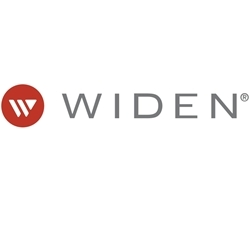Many companies are struggling to produce high-quality product content and deliver it to customers at the right time.
"Today's customers demand more digital content than ever before, and organizations are struggling to keep up," according to a Forrester Consulting study commissioned by Widen.
What's holding brands back from delivering product content that aligns with their customers' needs? Their content strategies—especially their approaches to integrating content tools and processes.
Sound familiar? We thought so, too. Companies have been wrestling with these problems for years, and now the challenges are magnified by the drastically increased demand for digital experiences. So we decided to seek out new and relevant data to better understand how to approach today's evolution of these familiar issues.
The Forrester study found that current product content strategies lack the foundation for success. But what's actually missing?
In short, companies are missing a strategic and integrated approach to their content technologies—specifically, digital asset management (DAM) and product information management (PIM) software.
- Content production, storage, and management are still spread across organizational silos and tools.
- Product data suffers from the same lack of organization.
- And with product content scattered across multiple independent tools, opportunities to increase production or quality—so you can deliver the digital experiences your customers deserve—are limited.
Let's start by looking at the technology you use to manage your product content.
What tools do you use to manage product content?
The pandemic made digital commerce the preferred way to shop and interact. Now, customers expect content that aligns with their journey every step of the way—or you risk losing them. That, in turn, puts a huge amount of pressure on teams to evolve their product content strategy efforts—because you have to not only deliver content faster but also deliver higher-quality content. And, eventually, you're storing and publishing more content types (e.g., 360º spin photography and video) than ever before just to stay competitive.
Does that sound impossible based on your current experience? Then your content technology is likely holding you back from the scale you need to achieve those goals.
Many companies are adding new content types to their mix to meet the rising demand for meaningful e-commerce interactions. With the right content tools, you create a solid back-end foundation for successful customer experiences on the front end.
According to the previously cited Forrester study, "Roughly seven out of 10 content marketers use PIM solutions (72%), customer relationship management (CRM) solutions (72%), DAM solutions (69%), marketing automation platforms (69%), and SEO/SEM management systems (68%). Yet effective content optimization is jeopardized if these technology solutions are not well-integrated."
That integrated part of the finding is what's vital: Teams might have all the right tools and still not be able to deliver the product content experience customers desire if technology solutions aren't working together to support your processes and strategies.
Without integration, delivering the kind of personalized content experiences your customers want will be nearly impossible.
Integrate product data with content to personalize experiences
Your customers rely on you to deliver product content at the right time. According to the same Forrester study, "Nearly half of organizations report the 'discover' and 'explore' phases as being the most difficult in which to deliver content. This also happens to be where consumers have the greatest need for accurate and detailed product content."
If you don't have the right content, customers won't complete their purchase and they'll find another brand that has the product content customers need for making an informed purchasing decision.
To know what content to deliver at each step of the "discover" and "explore" phases, you need to provide accurate, complete, and relevant product information. That takes a comprehensive integration of your DAM and PIM tools. If you can pull off that integration, you'll leap ahead of a big percentage of the market who lack these connected systems and are struggling to segment and personalize their content delivery.
"Just five out of 10 content marketers feel their segmentation and level of product detail are sufficient, while a mere 43% consider their personalization processes adequate to support content priorities."
Enrich Customer Experiences With Product Content Forrester Consulting study
Once you have your DAM and PIM systems working together, there's still a big challenge to overcome: Now you have to convince your entire organization to treat content as a strategic asset and support an integrated approach to content management.
Treat your content like a strategic asset
For your brand to be successful as a whole, your company has to understand that content is a strategic asset. It sounds like a simple concept, but many companies still keep DAM and PIM technologies small in their strategic vision.
According to the Forrester study, "Nearly half of organizations use DAM or PIM tools to manage brand and product content at the department level, while fewer than a third manage DAM or PIM at an enterprise level. These solutions are critical to optimizing content, but the lack of a holistic strategy puts organizations at risk of creating subpar workflows and analysis."
When your organization doesn't see the big picture around content strategy, it's ultimately your customers that suffer. And that means your bottom line suffers, too.
If you want to improve your ROI on product content, get clearer content insights, and create higher-converting customer experiences, you need to get decision-makers to understand that content is a companywide affair, not just a marketing initiative.
* * *
We commissioned this Forrester Consulting study to help illuminate current challenges in product content strategy and provide information to fill in the missing pieces. To understand these struggles, Forrester surveyed 259 digital marketing decision makers and 360 consumers from across North America and Europe.
Download the study today to begin filling in the gaps in your content strategy.




